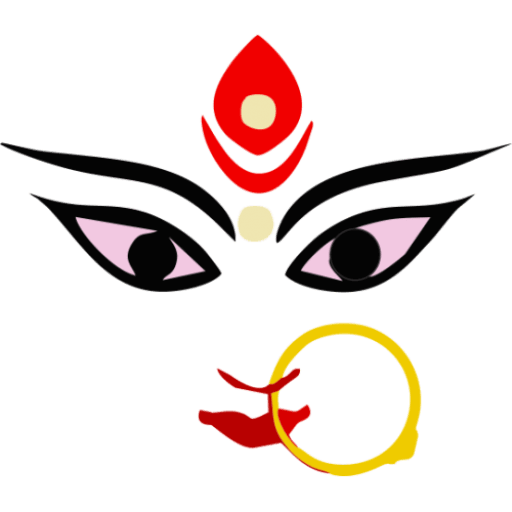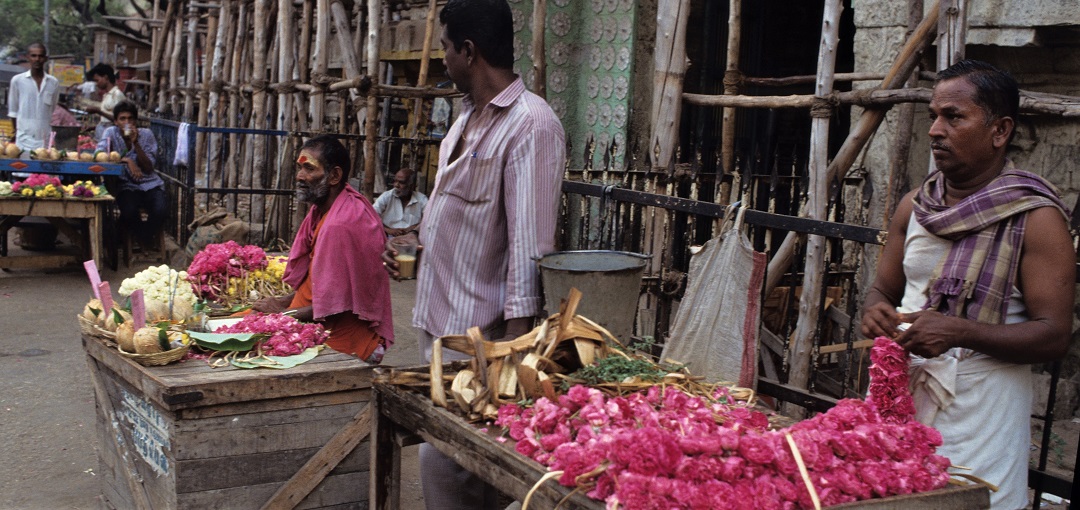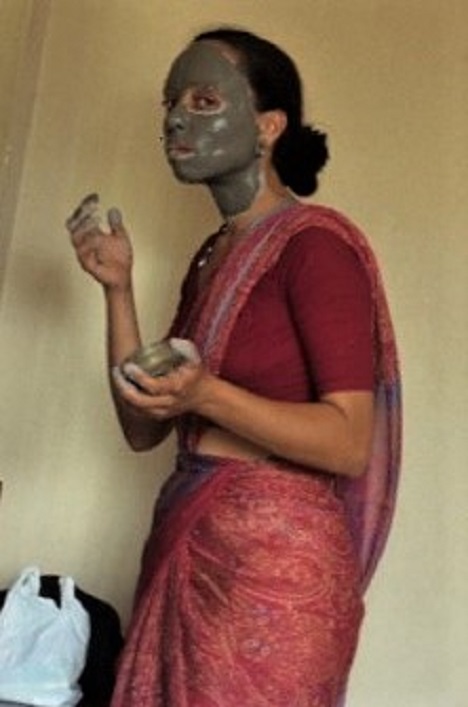Falling Backwards in Time
How the Goddess Meenakshi let me experience the secrets of her soul.


Madurai, Tamil Nadu, 1992
I went to Madurai because of its patron goddess, Meenakshi, a fierce, unmarried, meat-eating warrior considered to be a manifestation of Shiva’s wife Parvati. Her name meant ‘fish eyed’, probably due to a pair of large and brilliant eyes which never closed, giving her the power to watch over her devotees without interruption.
According to Tamil lore, her story started with a complicated ritual performed by the king of Madurai, her father, in the hope it would help his wife bear him a son. Instead, he got a girl with three breasts, though the Brahmins predicted that one would fall off as soon as she met the man of her life. They also suggested to raise her as the king’s successor, studying all the arts including warfare. She became a great warrior, and as such conquered new lands in all the eight directions. Her conquests ended when she reached the Himalayas, met Shiva, and lost one of her breasts. She made a vow of devotion, returned home, and was crowned ruler of Madurai.
I always loved legends involving strong girls, and while there I remember feeling as though her eyes were watching over me as well.
 As a way to better understand the condition of women in India, in those days I wore saris, which, coupled with my tanned Mediterranean complexion and long dark hair held in a plat, made me look like an Indian. As a result, tourist took pictures, Indian men stopped harassing me, and shopkeepers talked to me in Hindi. The disguise was perfect, until my silence made them notice the incongruences of my dress: three earrings instead of two, one ankle bracelet instead of two, and different toe rings in each foot. At this point, women always asked about my jewelry, unable to understand why I preferred an asymmetric look.
As a way to better understand the condition of women in India, in those days I wore saris, which, coupled with my tanned Mediterranean complexion and long dark hair held in a plat, made me look like an Indian. As a result, tourist took pictures, Indian men stopped harassing me, and shopkeepers talked to me in Hindi. The disguise was perfect, until my silence made them notice the incongruences of my dress: three earrings instead of two, one ankle bracelet instead of two, and different toe rings in each foot. At this point, women always asked about my jewelry, unable to understand why I preferred an asymmetric look.
Another giveaway was the presence of my small dog Afrika, either trotting by my side or half-hidden in my bag. Pet dogs were a rarity in those days, especially pretty ones like mine, and I could almost see people’s mental wheels turning as they tried to make sense of her and me.
Hence, I visited Meenakshi’s temple looking like an Indian, wrapped in a beautiful Cuttack sari woven in a complicated Ikat design, jasmine flowers threaded in my plat. Afrika stayed in the room, fan whirling at full speed.
I was unlucky, because the temple’s famous 50 meter-high towers were being restored, and instead of a million colorful figures they were covered in scaffoldings made of bamboo poles and palm fronds. The interior, however, was as stupefying as I had expected, with gigantic halls covered in intricate stone sculptures, beautiful paintings on the ceilings and walls, a large pool surrounded by an imposing portico, and some of the most beautiful statues I had seen thus far. People ambled about it full of reverence, a few holy men prayed near some sacred effigy, and the atmosphere was serene and subdued. In fact, I found the lack of religious fervor suspicious, and I remember walking around looking for some action.
That’s probably why I noticed a mast jutting up from some underground layer. Trying to find its source, I saw a line of devotees entering a small door. I followed them down a stepped passage, and found myself in a dark underground world lit by braziers and flaming wall torches, the air thick with smoke and echoing sounds. Walls, floors, and ceilings were lined with large stone blocks, forming chambers of different heights. In between the smoke, crowds of men and women moved in a determined way, all holding an offering made of fruits, flowers, coconut and incense, whose fragrance saturated the air.
I was struck dumb,
and for a few minutes stood there agape.
Then I worried: there were no foreigners, could this section be restricted to Hindus? So I followed the crowd, mimicking what others were doing. Hesitantly, because I couldn’t see further than a few meters.
We came upon what looked like a juncture, a large statue deviating the flow. People scattered, and I chose to go left, thinking that a clockwise direction would be the most appropriate. Soon, I found myself in a hall taken over by a furnace surrounded by priests and devotees. The furnace spewed great clouds of fragrant smoke, and a line of people zigzagged in front of it to donate their coconut offering and receive a large mark on the forehead. Two Brahmins chanted sacred prayers, a young one rang the clapper of a large suspended bell, and the scene looked frenetic, scaring me out. Nevertheless, I stood in line to receive my marking.
Further along was a tall corridor lit with fire torches attached to the walls, one side of which housed three storeys of differently sized shrines. Some were reachable through their own ramp of stairs, while others opened on a platform accessible from a communal ramp to the side. Each housed a different deity, presided by its own priest. Some shrines were obviously more famous than others, carved in more detail, visited by more people, lit with more oil lamps, and some were closed with an iron gate.
Walking further, the corridor opened into a massive chamber so thick with smoke all I could see were the braziers and wall torches. I bumped onto a bull, fully covered in brocades, tinsel, and flowers, then came upon a large statue of Shiva. It must have been three floors high, making me wonder how it fit under the serene temple above.
I entered a low passage, but it ended in a shrine lit with oil candles. It was so far from the others that it was quiet, its Brahmin smiling benevolently. I would have liked to talk to him, but felt intimidated and walked back to the great statue. There I saw another opening, entered, and found myself in a large room filled with women chanting an hypnotic song while dancing around some oil candles on the floor. I slid into a corner, and made myself invisible by not moving at all.
It was spellbinding— the women’s colorful saris whirling in the semi darkness and thick fragrant smoke, the flower garlands bouncing on their black hair, the ankle bracelets tinkling on their beautifully hennaed feet. They were of all ages and forms, young and agile, old and clumsy, in or out of step. It was obviously a sacred ritual – could they be the famous temple dancers whom the British outlawed? Yet many were married, sporting the typical black and gold necklace.
Nobody noticed me, and I stood there for half an hour at least. Of my first six months in India, that half an hour was the most wondrous. I had stumbled into a time-porthole, and was now in a different era, centuries or millennia before the present one. It was like… being inside the temple of the Vestals, and watching them dance a sacred Roman dance. Or somewhere deep inside the Karnak Temple Complex, watching a now-lost Egyptian ritual. An honor, a privilege, and a dream come true.
Don’t Miss the Next Story!


